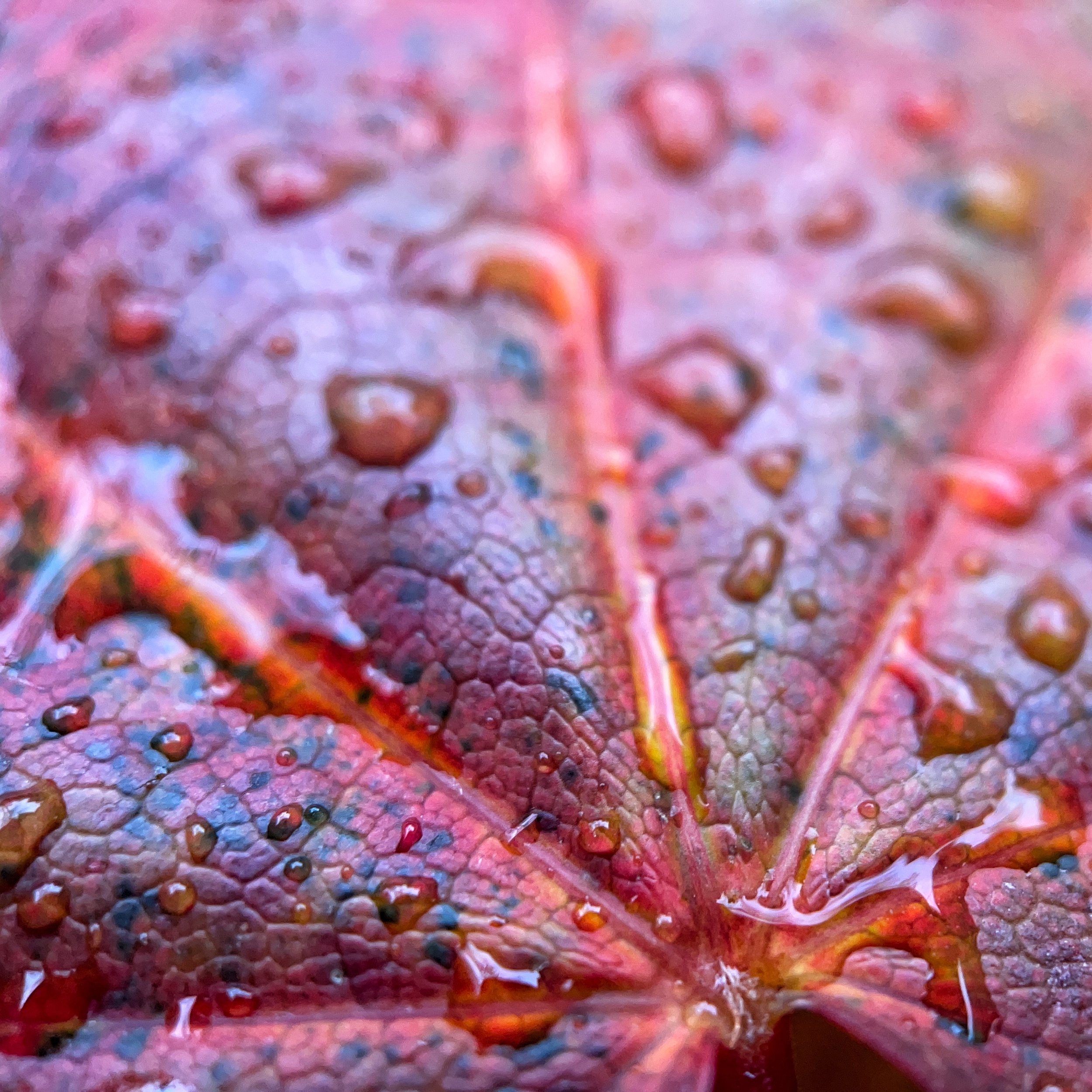Issue 7.2 (2022)
Cover: Milkweed Meadow by Jay Alexander
Since the onset of COVID-19, many of us have attuned to touch in different ways. Touch, to make contact with. How do we touch? Some of us have gone longer than ever before without touching other humans. Some of us have embraced touch across species. There is the touching and being-touched of grasses, branches, and butterflies in the light, as in this issue’s cover image, Milkweed Meadow by Jay Alexander. There is reveling in the microdrops of rain carried by the wind, alighting on a leaf, as in Jess Cherofsky’s Luscious. In this issue of The Hopper, we offer the touched-touching of ideas, thoughts, and bodies.
In our call for submissions, we invited writers and artists to share their experiences of ecological networks through sensuous encounters. Across these folds and ripples and waves, spirals and helices, these writers and artists expand what it means to sensuously connect with the world: tickle of honeybee, sticky popsicle drip, ant on your tongue. We witness and welcome embodied ecologies, queer ecologies, disabled ecologies, and ecologies of contact. We are touched-touching in the textures of dialect in Harry Clough’s “Curglaff” and in the queer bodies of Anna Laura Reeve’s “Vegetable X.” We feel the desert sun in “Abiquiu” with Zoe Boyer and the late summer humidity in John Macneill Miller’s “Mudpuppy Run,” and we enter the magical spacetime of the Duluth Rose Garden in Natalie Vestin’s “Rosarium.” As the work in this issue demonstrates, to touch—to make contact with—is a manifold of possibility.
In “Seeing with Fingers,” Jyothsna Phanija writes, “For you, fingers have mirrors. Only thing is you need not force them towards your face. / You find your senses activating with each listening.” Yes. Let’s turn to these writers and artists, to touch and be touched together.
Poetry
Hush Point | Lauren Camp
Curglaff | Harry Clough
Creektime | Natalie Deam
The Secret to Getting the Ants Off the Peonies | Caitlin Gildrien
Plagues | Melissa Jean
My Arachnid Neighbor | Elia Anie Kim
Seeing with Fingers | Jyothsna Phanija
Vegetable X | Anna Reeve
Forest Bathing | Kristen Staby Rembold
black bear story | Mara Adamitz Scrupe
Concurrent Planning | Megan Snyder-Camp
Lake Edge, January | Heather Swan
Wing Span by Carolyn Guinzio
Fiction
Abiquiu | Zoe Boyer
Strawberries & Cream | Mason Cashman
Mudpuppy Run | John MacNeill Miller
green crow gleaming | sid sibo
Incongruous | sid sibo
Nonfiction
Catching Frogs | Sara Dykman
To The Grassy Bald We Named Sweet Bay | Billie Hinton
Horse/Power | Maura Kelly
Escape to the Hive: Keeping Bees to Keep Myself | Kasey Butcher Santana
Popsicles at the End of the World | Christy Tending
Rosarium | Natalie Vestin
Relief Map by Laura Rockhold
Luscious by Jess Cherofsky
Cover Artist
Jay Alexander studied Far Eastern languages, art, and architecture in graduate school, and after finishing his studies, he started a small graphics company and for many years designed and illustrated medical and science college textbooks and developed the accompanying animations. Drawing on this graphics experience and his studies in Far Eastern art, he has devoted himself to expression with the simple media of ink, watercolor, and rice paper, concentrating on the reinterpretation of several dominant themes in Classical Chinese painting. He has exhibited his work in many local venues in the Amherst, Massachusetts, area, and his work has appeared in many literary arts publications. See more of Jay’s work in The Hopper here.




